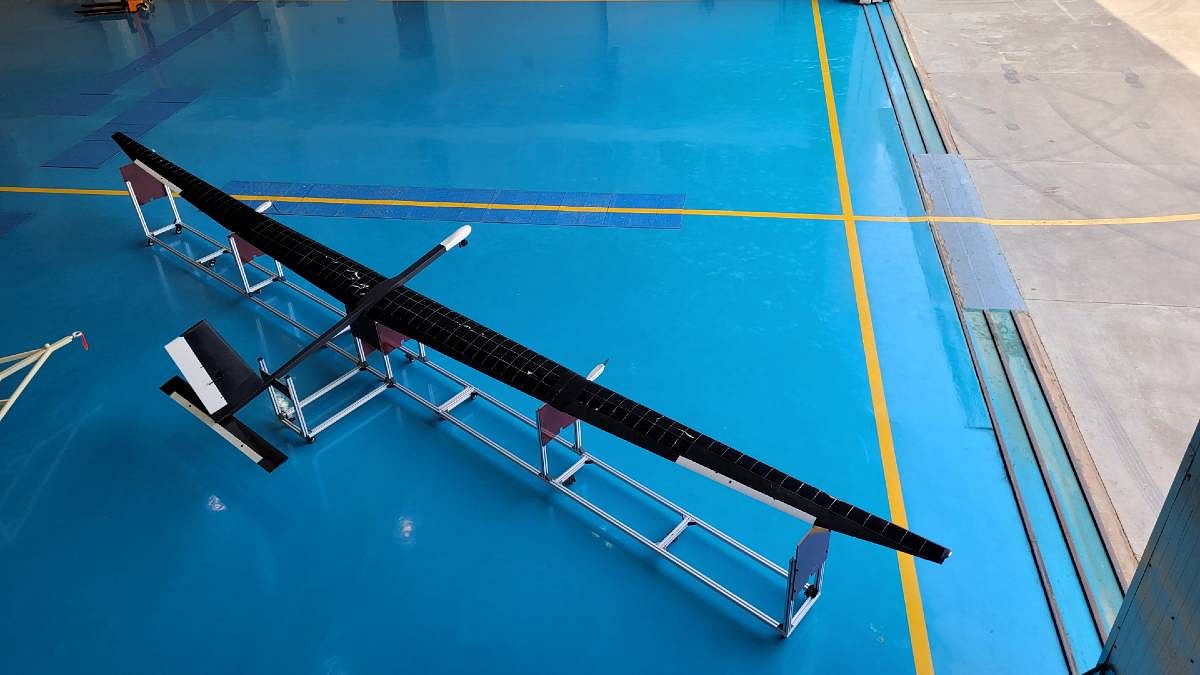SOURCE: AFI


The National Aerospace Laboratories (NAL), based in Bengaluru, has developed an innovative High-Altitude Platform (HAP)—an advanced system designed for long-duration surveillance and reconnaissance. This state-of-the-art platform represents a significant leap in India’s aerospace capabilities, providing an economical and highly effective alternative to traditional satellites and unmanned aerial vehicles (UAVs) for continuous monitoring of enemy territories.
One of the most remarkable aspects of NAL’s HAP is its ability to remain operational for extended periods. The aircraft is designed for 90 days of continuous operation, depending on atmospheric conditions and the efficiency of its onboard systems. This endurance allows for prolonged, uninterrupted monitoring, offering a continuous eye in the sky over strategically important areas.
To achieve this, the HAP will be assisted in its launch, taking off from the southern tip of India and ascending to altitudes between 5 km to 15 km—well above the sub-tropical jet stream that exists over northern India. Once past this atmospheric hurdle, the aircraft will reach its operational ceiling of 23 km.
The final version of the HAP will feature a wingspan comparable to that of an Airbus A320, yet it will weigh only as much as a motorcycle—an extraordinary feat of engineering. This lightweight structure, combined with its large wingspan, enables the HAP to remain aloft for extended durations while conserving energy.
The platform will utilize solar energy during daylight hours to power its operations, minimizing fuel dependency and maximizing its endurance in flight.
The HAP’s ability to conduct round-the-clock surveillance makes it an invaluable asset for national defense. Once equipped with the appropriate sensors, the HAP will provide continuous monitoring of enemy territories, offering India a unique advantage in intelligence gathering. Its high-altitude position and persistent presence allow for day-and-night operations, ensuring consistent situational awareness.
Moreover, the HAP’s long operational duration makes it an economical alternative to satellites and drones, which require regular replacement or refueling. This continuous surveillance capability will be especially beneficial for monitoring the borders of India, providing early warnings of threats and improving overall national security.
Key Specifications and Design Features
The NAL’s HAP is tailored to meet stringent operational requirements, reflecting its potential to serve both military and civilian applications. Some of its standout features include:
Takeoff Requirements: Despite its significant capabilities, the HAP is engineered for practicality. It can take off from a field just 150 to 200 meters in length, making it suitable for deployment in various environments.
Service Ceiling: The HAP is designed to operate at an impressive altitude of 23 km (75,000 feet), positioning it above commercial air traffic and providing a persistent, high-altitude vantage point for surveillance.
Payload Capacity: Capable of carrying 15 kg of advanced sensors and equipment, the HAP will be instrumental in tasks ranging from real-time surveillance to environmental monitoring.